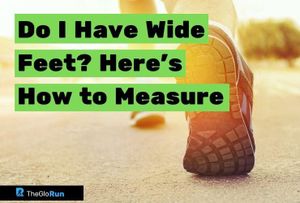This is a question asked by someone who would like to know the accurate size of their feet. Some online websites can provide information on foot size. We also have this blog post on how to find your correct shoe size.
Do I have wide feet? Your orthopedic surgeon has just asked you this. If you don’t, then the answer is no. But if you do, then the answer is yes. Generally speaking, we consider someone with wide feet to be someone with a broader foot than their heel. If your heel measures at least three inches across while your widest part measures four inches or more, then yes, you probably have wide feet.
If you answered yes, then it means that your feet are more comprehensive than what is deemed to be expected for an individual’s foot. This can result from a congenital deformity, or it can also be due to abnormal growth during childhood.
You are not alone. Many people are dealing with this issue, but they don’t know how to fix their foot issues because they don’t know how to find the right shoe that will fit them properly. On the other hand, some people only have one foot more comprehensive than the other and have no idea what shoe would work for them.
The ultimate goal for this section is to help people understand if their foot width is an issue or not so they can get a properly fitting shoe by calling a specialist.
The wide-footed are not your average size. In the world of fashion, they have been given much attention, which has led to an increase in footwear designs for this peculiarly shaped foot type. In 2013, the sales figures for men’s and women’s shoes in Europe went up by 21% and 16%, respectively, due to high demand from consumers with these types of feet.
What is a Foot Shape and Why Does it Matter?
Foot shape is a term used for describing the shape of the foot. It is a general term for describing the anatomical structure and includes things like size, arch height, and width. Foot shape can tell you if you have wide feet or narrow feet. Other than that, it can also indicate other health-related conditions like bunions, fallen arches, and hammertoes.
A foot shape is defined as a form of the foot that has a distinctive shape. In most cases, this is because of how the human skeleton has shaped the bones.
The standard foot shape is classified into two main types:
Long And Short
The extended foot incorporates a more significant length in the metatarsals and, thus, a longer arch. This foot type allows for a superior range of motion to facilitate better balance and stability while running or hiking. The shorter type includes less length from metatarsals to phalanges and is more efficient during speed activities such as sprinting or cycling.
Foot shape consideration
Foot Shape:
While there are no hard and fast rules on what a foot shape should look like, there are some general guidelines. The most important thing to remember is that your foot should neither be too narrow nor too wide for shoes to fit correctly and comfortably.
Wide feet:
People with wide feet tend to have more volume in their arches, making fitting into specific shoes difficult because they might not provide enough support for such a large volume.
The Health Benefits of Wide Feet – What Makes Wide Feet so Special?
A study found that people with wide feet are more likely to live longer than narrow feet.
So, what makes wide feet so unique? Wide feet can provide the necessary cushioning and shock absorption for your foot. As a result, you don’t need to worry about getting injured as often as people with narrow feet do. They aren’t just the healthiest; they’re also the prettiest.
Wide feet are healthier, especially when it comes to injury prevention. This is because they suffer more minor injuries because of their excellent shock absorption properties. With this kind of protection, you can walk on them for extended periods without being in pain or risking an injury.
How to Get Wide Foot Shape?
Wide feet are usually defined as having a distance of at least 8 inches between the longest part of the longest toe and the longest part of the foot.
The most common way to determine if your feet have vast proportions is to measure your foot length with a tape measure. Depending on the size of your foot, you may find that it measures anywhere from around 9 inches up to 12 inches or more.
A less accurate method is to use a piece of string and mark off one-inch increments along its length. Measure how much string you need, then wrap it around your foot and pull it tight. If your string measurement goes beyond 12 inches or so, the chances are that you have wide feet.
Many people have asked the same question, “how do I get wide feet?” Many things can help with this issue. The first step for you is to try on a pair of shoes that feel too tight or uncomfortable.
If your feet are not wide enough, then you need to purchase some wider shoes. You can also try wearing thick socks to increase the width of your foot. Wider shoe shapes will help you maintain healthy arches and provide support for your feet.
The Wide Foot Rule and How to Wear Heels with Running Shoes
The Wide Foot Rule is the most crucial in the world of shoes. It is an unwritten rule that dictates how to wear heels with running shoes.
It states that you should only wear heels with running shoes when your feet are more than a size and a half wider than your foot. If not, you risk pain and injury as the shoe doesn’t fit properly.
The truth is, this rule has been around for some time without much of a fuss because there’s never been any evidence to support it. But lately, we’ve seen more and more runners embracing this idea, and for a good reason too – there’s no risk in wearing them together.
How can you tell if you have wide feet?
One of the most common signs is if your feet are more comprehensive than your ankles. When walking, your foot should naturally roll inward so that the ball of your foot is closer to the ground. If this occurs, you are likely wearing a pair of shoes that are too narrow for your feet.
As for high heels, it’s not about how high they go up but rather the type of heel used. The type of heel has to do with what type of shoe it is; low heels are standard heels, and higher heels tend to be stilettos or platforms with a small heel at the front and a platform at the back.
Wide Feet & High Heels 101
Wide Feet and High Heels 101 is a primer for women who want to know what shoes they should buy.
Walking down the shoe aisle can be overwhelming: too pricey, too narrow, too short, and so on. So we did the research and rounded up our top six picks for your wide feet.
Wearing high heels for an extended period can cause severe damage to your feet, ankles, knees, and even your back. This leads to serious health complications and long-term pain. If you wear them for a large part of the day, this can lead to problems such as plantar fasciitis and Achilles tendonitis.
Wide feet aren’t necessarily wrong, but they do come with their own set of complications. They may not give you as much support as high heels would, but they’re still beneficial in certain situations, like with lightweight shoes or flats that you want to be more comfortable in.
How do you measure wide feet?
Wide feet are not a medical condition; they are perfectly normal in most people. However, in some cases, a person can develop a condition called foot hypermobility which causes the foot to move more in each step. This is because having wide feet and can lead to chronic pain and bone fractures.

Measure the widest part of your foot from side to side. The distance between these two points will tell you how wide your feet are. You have wide feet when your overall width is greater than 10 cm.
Final verdict
It may be challenging to determine if you have wide feet without going through a process of trial and error. However, some tell-tale signs can help you figure out your shoe size to buy better shoes.
In conclusion, by understanding your unique foot type and knowing what shoe styles will work best for you, you can increase comfort and reduce foot pain.
In conclusion, when it comes to finding the best wide shoes for you, an excellent place to start is in your local running store or specialty running store. Many of these stores have a knowledgeable staff to help you find the perfect pair of shoes for your feet.



Join the conversation